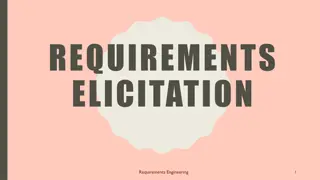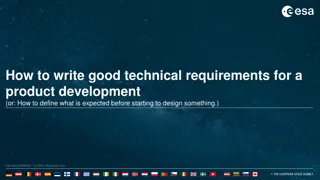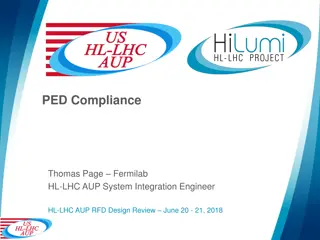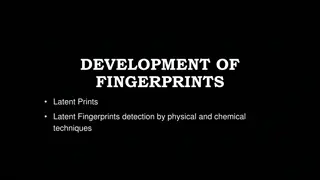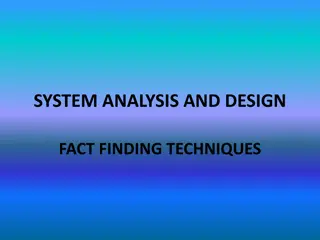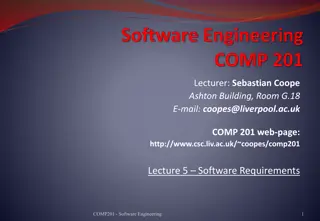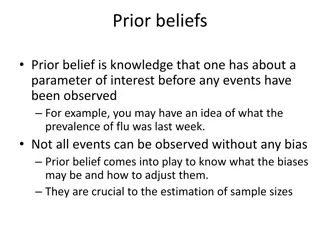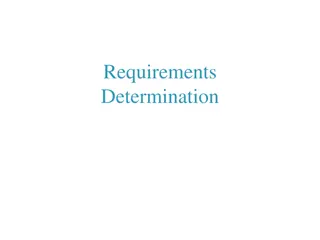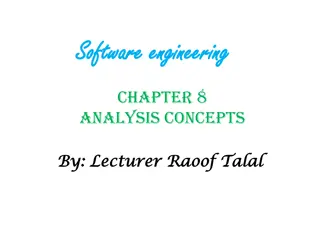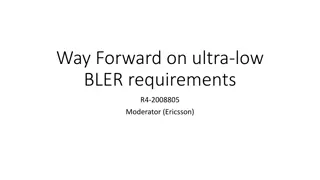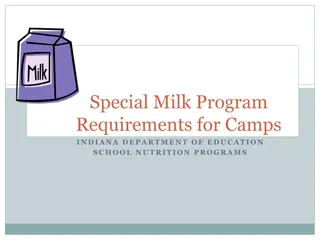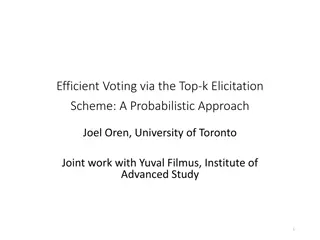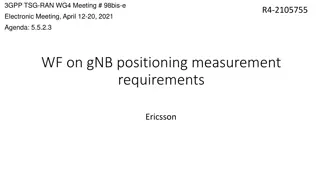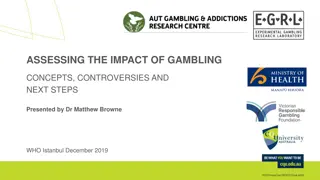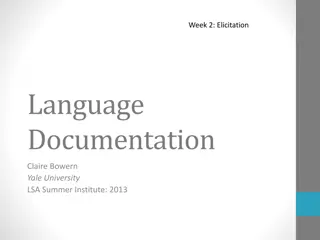Requirements Elicitation Techniques Overview
This content provides an overview of requirements elicitation techniques, including analysis of existing systems, documentation, observation, and various methods like interviews, questionnaires, brainstorming, and prototyping. It highlights the importance of effective communication and understanding user needs in software development processes.
Download Presentation

Please find below an Image/Link to download the presentation.
The content on the website is provided AS IS for your information and personal use only. It may not be sold, licensed, or shared on other websites without obtaining consent from the author.If you encounter any issues during the download, it is possible that the publisher has removed the file from their server.
You are allowed to download the files provided on this website for personal or commercial use, subject to the condition that they are used lawfully. All files are the property of their respective owners.
The content on the website is provided AS IS for your information and personal use only. It may not be sold, licensed, or shared on other websites without obtaining consent from the author.
E N D
Presentation Transcript
SEG3101 (Fall 2015) Requirements Elicitation Techniques Miguel Garz n, University of Ottawa Based on PowerPoint slides by Gunter Mussbacher (2009) with material from: Jo Atlee, Nancy Day, Dan Berry (all University of Waterloo); Lethbridge & Lagani re, Chapter 7; Bruegge & Dutoit, Chapter 4; I. Alexander; Amyot 2008-2009; Som 2008, Bochmann 2010
Table of Contents Elicitation Techniques Analysis of Existing Systems Documentation, Observation, and Ethnography Interviews Questionnaires Brainstorming Prototyping Use Cases When people talk, listen completely. Most people never listen.1 [1] Ernest Miller Hemingway (1899-1961) 2 SEG3101 (Fall 2014). Requirements Elicitation Techniques
3 SEG3101 (Fall 2014). Requirements Elicitation Techniques
Elicitation Techniques Existing Systems Interviews Questionnaires Brainstorming Prototyping Use Cases Elicitation Techniques Elicitation techniques Stakeholder analysis Analysis of existing systems or documentation, background reading Discourse analysis Task observation, ethnography Questionnaires Interviewing Brainstorming Joint Application Design (JAD) Prototyping Pilot system Use cases and scenarios Risk analysis See also: http://www.slideshare.net/hayriyesakarya/ elicitation-procedures-10618009 4 SEG3101 (Fall 2014). Requirements Elicitation Techniques
Elicitation Techniques Existing Systems Interviews Questionnaires Brainstorming Prototyping Use Cases Comparison of Data-Gathering Techniques1 Technique Good for Kind of data Plus Minus Questionnaires Answering specific questions Quantitative and qualitative data Can reach many people with low resource The design is crucial. Response rate may be low. Responses may not be what you want Interviews Exploring issues Some quantitative but mostly qualitative data Interviewer can guide interviewee. Encourages contact between developers and users Time consuming. Artificial environment may intimidate interviewee Focus groups and workshops Collecting multiple viewpoints Some quantitative but mostly qualitative data Highlights areas of consensus and conflict. Encourages contact between developers and users Possibility of dominant characters Naturalistic observation Understanding context of user activity Qualitative Observing actual work gives insight that other techniques cannot give Very time consuming. Huge amounts of data Studying documentation Learning about procedures, regulations, and standards Quantitative No time commitment from users required Day-to-day work will differ from documented procedures [1] Preece, Rogers, and Sharp Interaction Design: Beyond human-computer interaction , p214 See also this intro and comparison from Ying Chen : http://www.umsl.edu/~ycnx6/ 5 SEG3101 (Fall 2014). Requirements Elicitation Techniques
Elicitation Techniques Existing Systems Interviews Questionnaires Brainstorming Prototyping Use Cases Analysis of Existing Systems (1) Useful when building a new improved version of an existing system Important to know: What is used, not used, or missing What works well, what does not work How the system is used (with frequency and importance) and it was supposed to be used, and how we would like to use it 7 SEG3101 (Fall 2014). Requirements Elicitation Techniques
Elicitation Techniques Existing Systems Interviews Questionnaires Brainstorming Prototyping Use Cases Analysis of Existing Systems (2) Why analyze an existing system? Users may become disillusioned with new system or do not like the new system if it is too different or does not do what they want (risk of nostalgia for old system) To appropriately take into account real usage patterns, human issues, common activities, relative importance of tasks/features To catch obvious possible improvements (features that are missing or do not currently work well) To find out which "legacy" features can/cannot be left out 8 SEG3101 (Fall 2014). Requirements Elicitation Techniques
Elicitation Techniques Existing Systems Interviews Questionnaires Brainstorming Prototyping Use Cases Review Available Documentation Start with reading available documentation User documents (manual, guides ) Development documents Requirements documents Internal memos Change histories Of course, often these are out of date, poorly written, wrong, etc., but it's a good starting point Discourse analysis Use of words and phrases is examined in written or spoken language 9 SEG3101 (Fall 2014). Requirements Elicitation Techniques
Elicitation Techniques Existing Systems Interviews Questionnaires Brainstorming Prototyping Use Cases Observation and Related Techniques (1) Observation Get into the trenches and observe specialists in the wild Shadow important potential users as they do their work Initially observe silently (otherwise you may get biased information) Ask user to explain everything he or she is doing Session videotaping Ethnography also attempts to discover social, human, and political factors, which may also impact requirements 10 SEG3101 (Fall 2014). Requirements Elicitation Techniques
Elicitation Techniques Existing Systems Interviews Questionnaires Brainstorming Prototyping Use Cases Observation and Related Techniques (2) Can be supplemented later with questionnaires Based on what you know now the results of observation To answer questions that need comparison or corroboration (confirmation) To obtain some statistics from a large number of users (look for statistical significance!), e.g.: How often do you use feature X? What are the three features you would most like to see? Can be supplemented later with interviews After getting a better idea of what is to be done, probably some questions require more detailed answers You will not be wasting other people's time or your own This is very labour intensive! 11 SEG3101 (Fall 2014). Requirements Elicitation Techniques
Elicitation Techniques Existing Systems Interviews Questionnaires Brainstorming Prototyping Use Cases Ethnography Overview (1) Comes from anthropology, literally means "writing the culture" Essentially seeks to explore the human factors and social organization of activities understand work Studies have shown that work is often richer and more complex than is suggested by simple models derived from interviews Social scientists are trained in observation and work analysis Discoveries are made by observation and analysis, workers are not asked to explain what they do Collect what is ordinary/what is it that people do (aim at making the implicit explicit) Study the context of work and watch work being done 12 SEG3101 (Fall 2014). Requirements Elicitation Techniques
Elicitation Techniques Existing Systems Interviews Questionnaires Brainstorming Prototyping Use Cases Ethnography Overview (2) Useful to discover for example What does a nuclear technician do during the day? What does his workspace look like? Less useful to explore political factors Workers are aware of the presence of an outside observer 13 SEG3101 (Fall 2014). Requirements Elicitation Techniques
Elicitation Techniques Existing Systems Interviews Questionnaires Brainstorming Prototyping Use Cases Ethnography Example Sommerville et al. were involved in a project where they had to elicit the requirements of an air traffic control system They observed the air traffic controllers in action with the existing system Surprising observations Controllers often put aircrafts on potentially conflicting headings with the intention of fixing them later System generates an audible alarm when there is a possible conflict The controllers close the alarms because they are annoyed by the constant warnings Incorrect conclusion The controllers do not like audible alarms because they close them More accurate observation The controllers do not like being treated like idiots Need to minimize false alarms (more generally: false positives) 14 SEG3101 (Fall 2014). Requirements Elicitation Techniques
Elicitation Techniques Existing Systems Interviews Questionnaires Brainstorming Prototyping Use Cases False/True Positives/Negatives Confusion Matrix ? [http://en.wikipedia.org/wiki/Sensitivity_and_specificity] 15 SEG3101 (Fall 2014). Requirements Elicitation Techniques
Elicitation Techniques Existing Systems Interviews Questionnaires Brainstorming Prototyping Use Cases Interviews (1) Requires preparation and good communication management Achieve interview objectives without preventing the exploration of promising leads Interview as many stakeholders as possible Not just clients and users Ask problem-oriented questions Ask about specific details, but Detailed and solution-specific questions may miss the stakeholder s real requirements. Example: Would you like Word 2010, Excel 2010 or both? vs. Would you like to do word processing, computations, or both? 17 SEG3101 (Fall 2014). Requirements Elicitation Techniques
Elicitation Techniques Existing Systems Interviews Questionnaires Brainstorming Prototyping Use Cases Interviews Objectives and Process (2) Three main objectives: Record information to be used as input to requirements analysis and modeling Discover information from interviewee accurately and efficiently Reassure interviewee that his/her understanding of the topic has been explored, listened to, and valued Process consists of four important steps: Planning and preparation Interview session Consolidation of information Follow-up Many strategies for questioning 18 SEG3101 (Fall 2014). Requirements Elicitation Techniques
Elicitation Techniques Existing Systems Interviews Questionnaires Brainstorming Prototyping Use Cases Interviews Planning and Preparation Important to plan and prepare interviews Set goals and objectives for the interview Acquire background knowledge of the subject matter to conduct an effective interview About the domain (vocabulary, problems...) but also about the interviewee (work tasks, attitude...) Prepare questions in advance, by subject Organize the environment for conducting an effective interview Determine how the elicitation notes will be taken (manually, audio, video, by whom ) 19 SEG3101 (Fall 2014). Requirements Elicitation Techniques
Elicitation Techniques Existing Systems Interviews Questionnaires Brainstorming Prototyping Use Cases Interviews Session Make the interviewee comfortable and confident Be polite and respectful! Adjust to the interviewee You have your goals be persistent but flexible Interview several people at once to create synergy Try to detect political aspects as they may influence the said and the unsaid 20 SEG3101 (Fall 2014). Requirements Elicitation Techniques
Elicitation Techniques Existing Systems Interviews Questionnaires Brainstorming Prototyping Use Cases Interviews Elicitation Notes Revise and complete the elicitation notes after the interview Needs to be done soon after because one forgets the details (and everything else) Identify inconsistencies and address them in a follow-up interview or by email Keep all diagrams, charts, models created during the discussions You are learning, so be precise Pay attention to terminology Use the interviewee s terminology Identify synonyms Create a glossary if necessary Thank the participants (e.g., by email), and keep the door open to future interactions 21 SEG3101 (Fall 2014). Requirements Elicitation Techniques
Elicitation Techniques Existing Systems Interviews Questionnaires Brainstorming Prototyping Use Cases Common Interviewing Mistakes (1) Not interviewing all of the right people Different points of view of stakeholders Asking direct questions too early E.g., design of a transportation system: How much horsepower do you need? (direct) How many passengers? How far? How fast? (indirect) E.g., camera design for novice photographer: How important is control over shutter speed and aperture? (direct) Will you be taking action shots, still shots, or both? (indirect) 22 SEG3101 (Fall 2014). Requirements Elicitation Techniques
Elicitation Techniques Existing Systems Interviews Questionnaires Brainstorming Prototyping Use Cases Common Interviewing Mistakes (2) Interviewing one-at-a-time instead of in small groups More people might help get juices flowing as in brainstorming Users cannot think of everything they need when asked individually, but will recall more requirements when they hear others' needs Reduces spotlight on individuals (may produce more interesting answers) This interaction is called synergy, the effect by which group responses outperform the sum of the individuals' responses Exercise: Tell me 10 jokes each Do not let one participant dominate the discussion Assuming that stated needs are exactly correct Often users do not know exactly what they want and order "what he is eating" Need to narrow what is asked for down to what is needed 23 SEG3101 (Fall 2014). Requirements Elicitation Techniques
Elicitation Techniques Existing Systems Interviews Questionnaires Brainstorming Prototyping Use Cases Common Interviewing Mistakes (3) Trying to convince stakeholders that YOU are smart wrong place to do that! Instead take every opportunity to show you think the stakeholder is smart Contrast these two cases1 My Elevators Are Too Slow! I See. Tell Me Why You Feel They Are Too Slow. I Don t Think So. I Think You Have an Elevator Throughput Problem, not a Speed Problem [1] Alan M. Davis Just enough requirements management 24 SEG3101 (Fall 2014). Requirements Elicitation Techniques
Elicitation Techniques Existing Systems Interviews Questionnaires Brainstorming Prototyping Use Cases Interviews Start Up Questions (1) Context-free questions to narrow the scope a bit (Weinberg) Identify customers, goals, and benefits Who is (really) behind the request for the system? Who will use the system? Willingly? Are there several types of users? What is the potential economic benefit from a successful solution? Is a (pre-existing) solution available from another source? 25 SEG3101 (Fall 2014). Requirements Elicitation Techniques
Elicitation Techniques Existing Systems Interviews Questionnaires Brainstorming Prototyping Use Cases Interviews Start Up Questions (2) When do you need it by? Can you prioritize your needs? What are your constraints? Time Budget Resources (human or otherwise) Expected milestones (deliverables and dates)? 26 SEG3101 (Fall 2014). Requirements Elicitation Techniques
Elicitation Techniques Existing Systems Interviews Questionnaires Brainstorming Prototyping Use Cases Interviews Start Up Questions (3) Try to characterize the problem and its solution What would be a "good" solution to the problem? What problems is the system trying to address? In what environment will the system be used? Any special performance issues? Other special constraints? What is (un)likely to change? Future evolution? What needs to be flexible (vs. quick & dirty)? 27 SEG3101 (Fall 2014). Requirements Elicitation Techniques
Elicitation Techniques Existing Systems Interviews Questionnaires Brainstorming Prototyping Use Cases Interviews Start Up Questions (4) Calibration and tracking questions Are you the right person to answer these questions? Are your answers "official"? If not, whose are? Are these questions relevant to the problem as you see it? Are there too many questions? Is this the correct level of detail? Is there anyone else I should talk to? Is there anything else I should be asking you? Have you told me everything you know about the problem? Do you have any questions? 28 SEG3101 (Fall 2014). Requirements Elicitation Techniques
Elicitation Techniques Existing Systems Interviews Questionnaires Brainstorming Prototyping Use Cases Interviews Start Up Questions (5) Questions that cannot be asked directly (ask indirectly) Are you opposed to the system? Are you trying to obstruct/delay the system? Are you trying to create a more important role for yourself? Do you feel threatened by the proposed system? Are you trying to protect your job? Is your job threatened by the new system? Is anyone else's? 29 SEG3101 (Fall 2014). Requirements Elicitation Techniques
Elicitation Techniques Existing Systems Interviews Questionnaires Brainstorming Prototyping Use Cases Interviews Specific Questions (1) Functional requirements What will the system do? When will the system do it? Are there several modes of operations? What kinds of computations or data transformations must be performed? What are the appropriate reactions to possible stimuli? For both input and output, what should be the format of the data? Must any data be retained for any period of time? 30 SEG3101 (Fall 2014). Requirements Elicitation Techniques
Elicitation Techniques Existing Systems Interviews Questionnaires Brainstorming Prototyping Use Cases Interviews Specific Questions (2) Design Constraints Physical environment Where is the equipment to be located? Is there one location or several? Are there any environmental restrictions, such as temperature, humidity, or magnetic interference? Are there any constraints on the size of the system? Are there any constraints on power, heating, or air conditioning? Are there constraints on the programming language because of existing software components? 31 SEG3101 (Fall 2014). Requirements Elicitation Techniques
Elicitation Techniques Existing Systems Interviews Questionnaires Brainstorming Prototyping Use Cases Interviews Specific Questions (3) Design Constraints Interfaces Is input coming from one or more other systems? Is output going to one or more other systems? Is there a prescribed way in which input/output need to be formatted? Is there a prescribed way for storing data? Is there a prescribed medium that the data must use? Standards Are there any standards relevant to the system? Laws, policies, and regulations Are there any laws, policies, or regulations applicable here? 32 SEG3101 (Fall 2014). Requirements Elicitation Techniques
Elicitation Techniques Existing Systems Interviews Questionnaires Brainstorming Prototyping Use Cases Interviews Specific Questions (4) Performance Are there constraints on execution speed, response time, or throughput? What efficiency measure will apply to resource usage and response time? How much data will flow through the system? How often will data be received or sent? 33 SEG3101 (Fall 2014). Requirements Elicitation Techniques
Elicitation Techniques Existing Systems Interviews Questionnaires Brainstorming Prototyping Use Cases Interviews Specific Questions (5) Usability and Human Factors What kind of training will be required for each type of user? How easy should it be for a user to understand and use the system? How difficult should it be for a user to misuse the system? 34 SEG3101 (Fall 2014). Requirements Elicitation Techniques
Elicitation Techniques Existing Systems Interviews Questionnaires Brainstorming Prototyping Use Cases Interviews Specific Questions (6) Security Must access to the system or information be controlled? Should each user's data be isolated from data of other users? Should user programs be isolated from other programs and from the operating system? Should precautions be taken against theft or vandalism? 35 SEG3101 (Fall 2014). Requirements Elicitation Techniques
Elicitation Techniques Existing Systems Interviews Questionnaires Brainstorming Prototyping Use Cases Interviews Specific Questions (7) Reliability and Availability Must the system detect and isolate faults? What is the prescribed mean time between failures? Is there a maximum time allowed for restarting the system after failure? How often will the system be backed up? Must backup copies be stored at a different location? Should precautions be taken against fire or water damage? 36 SEG3101 (Fall 2014). Requirements Elicitation Techniques
Elicitation Techniques Existing Systems Interviews Questionnaires Brainstorming Prototyping Use Cases Interviews Specific Questions (8) Maintainability Will maintenance merely correct errors, or will it also include improving the system? When and in what ways might the system be changed in the future? How easy should it be to add features to the system? How easy should it be to port the system from one platform (computer, operating system) to another? 37 SEG3101 (Fall 2014). Requirements Elicitation Techniques
Elicitation Techniques Existing Systems Interviews Questionnaires Brainstorming Prototyping Use Cases Interviews Specific Questions (9) Precision and Accuracy How accurate must data calculations be? To what degree of precision must calculations be made? 38 SEG3101 (Fall 2014). Requirements Elicitation Techniques
Elicitation Techniques Existing Systems Interviews Questionnaires Brainstorming Prototyping Use Cases More on Interviews Watch for unanswerable questions How do you tie your shoelaces? See interesting video: http://www.youtube.com/watch?v=2WBef84bodc 39 SEG3101 (Fall 2014). Requirements Elicitation Techniques
Elicitation Techniques Existing Systems Interviews Questionnaires Brainstorming Prototyping Use Cases Ignorance is bliss 1 According to Dan Berry, ignorance of a domain is a good thing! Ignorance (not stupidity !) allows one to expose hypotheses and some implicit facts Berry even suggests that one day, requirements engineers may advertise their domains of ignorance (rather than their domains of expertise) to find a job! Actually, a mix of domain experts and domain ignorants on a team is a good thing2 [1] The Matrix, 1999 [2] Ali Niknafs, Daniel M. Berry: An industrial case study of the impact of domain ignorance on the effectiveness of requirements idea generation during requirements elicitation. RE 2013: 279-283 40 SEG3101 (Fall 2014). Requirements Elicitation Techniques
Elicitation Techniques Existing Systems Interviews Questionnaires Brainstorming Prototyping Use Cases Questionnaires and Surveys Some benefits: Can reach multiple people, maybe in an anonymous way Asynchronous, distributed, and can be quick to answer Cheap Challenges: Preparation time! Choice of questions: open-ended and close (lack of flexibility) Choice of answers and scales (nominal, intervals, Likert ); avoid centralist tendencies! Statistical significance during analysis Validity of questions (bias, ambiguities) Repetition and order of questions Determining suitable participants to invite (risk of bias, of fraud) Getting people to answer everything (exhaustion, unattractive )! 42 SEG3101 (Fall 2014). Requirements Elicitation Techniques
Elicitation Techniques Existing Systems Interviews Questionnaires Brainstorming Prototyping Use Cases Types of Questions to Consider Demography questions (for classification) Age, country, occupation For analysis from many angles Beware of re-identification risks if supposed to be anonymous Attitudinal questions What do you think of ? Do you agree with ? Scale with 4-6 values (no center) or 5-7 values (with neutral value) 1. Strongly agree 2. Agree somewhat 3. Neither agree nor disagree (Undecided) 4. Disagree somewhat 5. Strongly disagree Supplementary open questions (instructive, but qualitative) Optional/alternative questions, by population Redundant questions, for robustness 43 SEG3101 (Fall 2014). Requirements Elicitation Techniques
Elicitation Techniques Existing Systems Interviews Questionnaires Brainstorming Prototyping Use Cases Analysis to Consider In Advance! Will the survey be repeated (before/after, for comparison)? Determine the type of (statistical) analysis, e.g.: Statistical significance? http://en.wikipedia.org/wiki/Statistical_significance Test your questionnaire and your analysis on a small group! See also this important video on surveys and questionnaires: http://www.youtube.com/watch?v=rSwVZJT9j1c 44 SEG3101 (Fall 2014). Requirements Elicitation Techniques
Elicitation Techniques Existing Systems Interviews Questionnaires Brainstorming Prototyping Use Cases Brainstorming To invent new way of doing things or when much is unknown When there are few or too many ideas Early on in a project particularly when: Terrain is uncertain There is little expertise for the type of applications Innovation is important (e.g., novel system) Two main activities: The Storm: Generating as many ideas as possible (quantity, not quality) wild is good! The Calm: Filtering out of ideas (combine, clarify, prioritize, improve ) to keep the best one(s) may require some voting strategy Roles: scribe, moderator (may also provoke), participants ! ! ! ! ! ! 46 SEG3101 (Fall 2014). Requirements Elicitation Techniques
Elicitation Techniques Existing Systems Interviews Questionnaires Brainstorming Prototyping Use Cases Brainstorming Objectives Hear ideas from everyone, especially unconventional ideas Keep the tone informal and non-judgemental Keep the number of participants reasonable if too many, consider a playoff -type filtering and invite back the most creative to multiple sessions Encourage creativity Choose good, provocative project name. Choose good, provocative problem statement Get a room without distractions, but with good acoustics, whiteboards, coloured pens, provide coffee/donuts/pizza/beer Provide appropriate props/mock-ups 47 SEG3101 (Fall 2014). Requirements Elicitation Techniques
Elicitation Techniques Existing Systems Interviews Questionnaires Brainstorming Prototyping Use Cases Brainstorming Roles Scribe Write down all ideas (may also contribute) May ask clarifying questions during first phase but without criticizing Moderator/Leader Cannot be the scribe Two schools of thought: traffic cop or agent provocateur Traffic cop enforces "rules of order", but does not throw his/her weight around otherwise Agent provocateur traffic cop plus more of a leadership role, comes prepared with wild ideas and throws them out as discussion wanes May also explicitly look for variations and combinations of other suggestions 48 SEG3101 (Fall 2014). Requirements Elicitation Techniques
Elicitation Techniques Existing Systems Interviews Questionnaires Brainstorming Prototyping Use Cases Brainstorming Participants Virtually any stakeholder, e.g. Developers Domain experts End-users Clients ... Ideas-people a company may have a special team of people Chair or participate in brainstorming sessions Not necessarily further involved with the project 49 SEG3101 (Fall 2014). Requirements Elicitation Techniques
Elicitation Techniques Existing Systems Interviews Questionnaires Brainstorming Prototyping Use Cases Brainstorming The Storm Goal is to generate as many ideas as possible Quantity, not quality, is the goal at this stage Look to combine or vary ideas already suggested No criticism or debate is permitted do not want to inhibit participants Participants understand nothing they say will be held against them later on Scribe writes down all ideas where everyone can see E.g., whiteboard, paper taped to wall Ideas do not leave the room Wild is good! Feel free to be gloriously wrong Participants should NOT censor themselves or take too long to consider whether an idea is practical or not let yourself go! 50 SEG3101 (Fall 2014). Requirements Elicitation Techniques
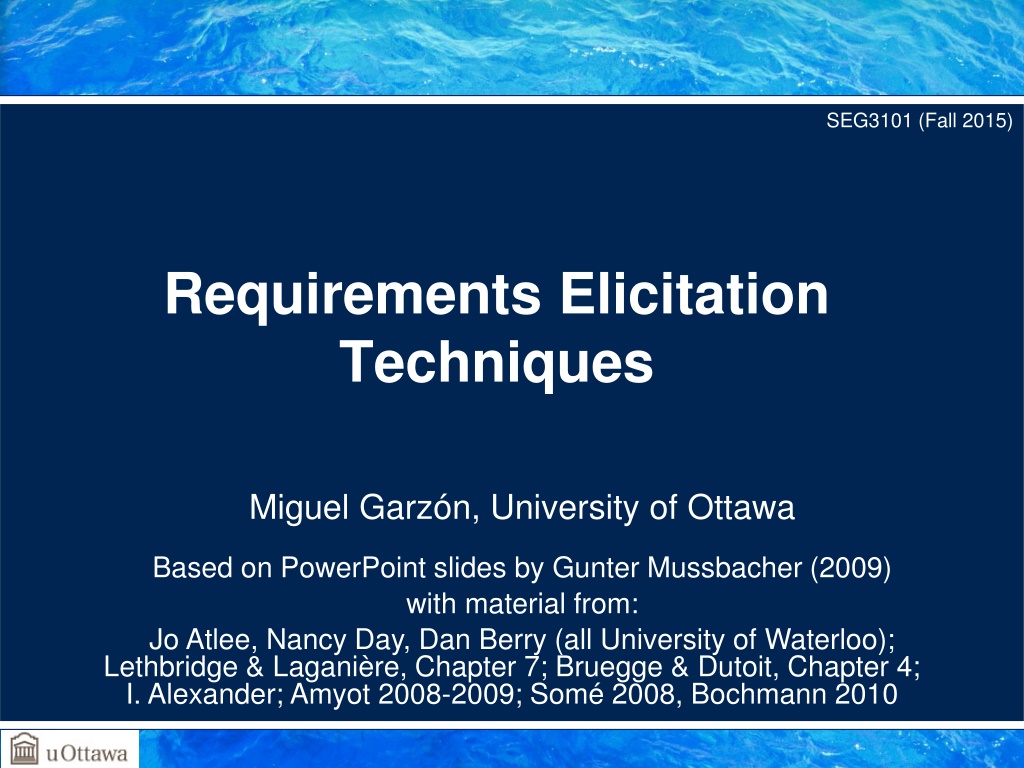
 undefined
undefined





















